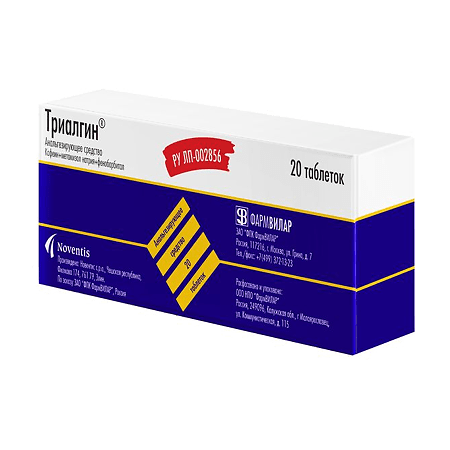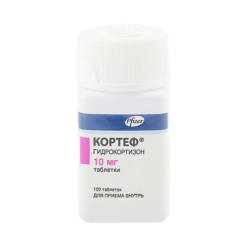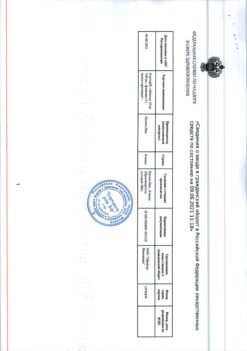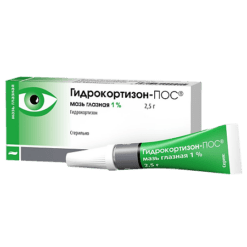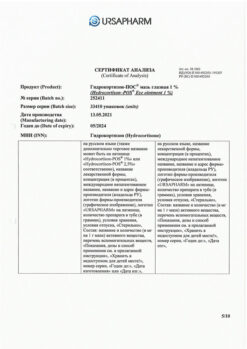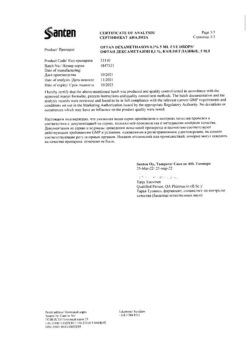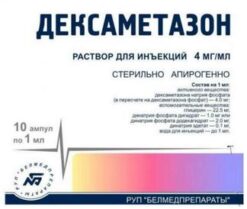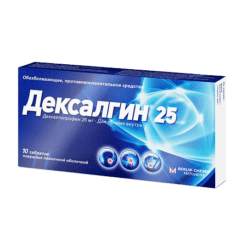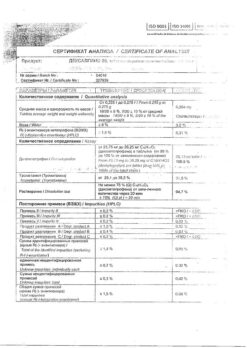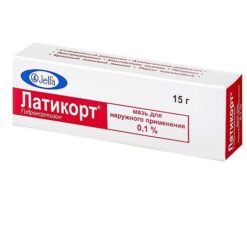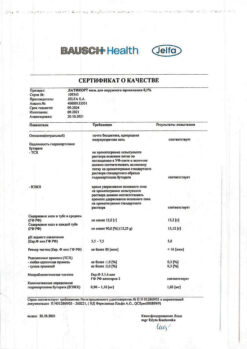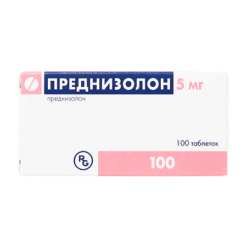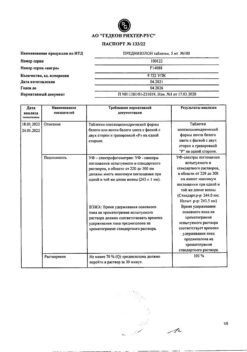No products in the cart.
Trialgin2, tablets 20 pcs
€1.00
Out of stock
(E-mail when Stock is available)
Description
An analgesic combined (NSAID+psychostimulant+barbiturate)
ATX Code
N02BB72
Pharmacodynamics:
A combination drug. It has analgesic and antipyretic effects. Analgesic effect develops after 20-30 minutes and reaches its maximum after 45 minutes. The pharmacological properties of the drug are caused by the action of the components included in it.
Sodium metamizole is a derivative of pyrazolone with analgesic, antipyretic and antispasmodic effect. The mechanism of action is not fully understood. According to studies, metamizole and its active metabolite (4N-methylaminoantipyrine) have a central and peripheral mechanism of action. It nonselectively inhibits cyclooxygenase and reduces the formation of prostaglandins from arachidonic acid.
Phenobarbital belongs to the group of barbiturates. It interacts with the barbiturate site of benzodiazepine-γ-aminobutyric acid (GABA)-receptor complex which increases the sensitivity of GABA receptors to GABA and leads to opening of chlorine channels, which increases their flow into the cell and leads to hyperpolarization. Suppresses sensory areas of the cerebral cortex reduces motor activity suppresses cerebral functions including the respiratory center. Does not significantly affect the cardiovascular system. Reduces the tone of the smooth muscles of the gastrointestinal tract. In small doses it has a sedative effect.
Caffeine increases reflex excitability of the spinal cord stimulates respiratory and vasomotor centers dilates blood vessels of skeletal muscles of the brain, heart and kidneys reduces platelet aggregation; it reduces sleepiness and fatigue increases mental and physical performance. In this combination, a small dose of caffeine has almost no stimulating effect on the central nervous system, but it increases the tone of the cerebral blood vessels and accelerates blood flow.
Pharmacokinetics:
Sodium metamizole
After oral administration, sodium metamizole is hydrolyzed to the pharmacologically active 4N-methylaminoantipyrine (MAA). Bioavailability of MAA after oral administration is 90%, which is slightly higher than with parenteral administration. Simultaneous intake of food has no significant effect on the pharmacokinetics of sodium metamizole. Clinical efficacy is determined mainly by MAA and to a lesser extent by the metabolites of 4N-aminoantipyrine (AA). The value of the area under the curve “concentration-time” (AUC) of AA is 25% of this value for MAA.
The metabolites 4N-acetylaminoantipyrine (AAA) and 4N-formylaminoantipyrine (FAA) have no pharmacological activity.
All metabolites have nonlinear pharmacokinetics. The clinical significance of this phenomenon is not known. Cumulation of metabolites does not play a major role in short-term use.
Sodium metamizole penetrates the placenta. Metabolites of metamizole penetrate into breast milk.
The binding to plasma proteins MAA is 58% AA is 48% FAA is 18% and AAA is 14%.
After a single oral administration, 85% of the dose is detected in the urine as metabolites of which 3±1% is MAA 6±3% is AA 26±8% is AA and 23±4% is FAA.
The renal clearance after a single oral administration of 1 g of sodium metamizole for MAA is 5±2 mL/min for AA is 38±13 mL/min for AA is 61±8 mL/min and FAA is 49±5 mL/min.
The corresponding plasma elimination half-lives for MAA are 27±05 h AA is 37±13 h AA is 95±15 h and FAA is 112±15 h.
Elderly
The AUC is increased by a factor of 2 to 3 in elderly patients.
In patients with cirrhosis, the half-lives of MAA and FAA are increased approximately 3-fold with single drug administration, whereas the half-lives of AA and AAA do not follow the same pattern. High doses should be avoided in these patients.
Renal dysfunction
In renal failure, the excretion rate of some metabolites (AAA and FAA) has been reported to be decreased. High doses should be avoided in these patients.
bioavailability
According to a clinical study, the pharmacokinetic parameters of 4-MAA when ingested with 1 g of sodium metamizole (tablets) are as follows (mean values and standard deviations are given): The maximum plasma concentration (Cmax) is 173±754 mg/L; the time to reach maximum plasma concentration (Tmax) is 142±054 h; the area under the concentration-time curve (AUC) is 809±341 [mg x h/L]. Absolute bioavailability of 4-MAA by AUC when tablets are taken is 93%.
Phenobarbital
It is completely but relatively slowly absorbed when taken orally. Maximum plasma concentration is observed 1-2 hours after ingestion.
About 50% is bound to plasma proteins. It is evenly distributed in different organs and tissues; its lower concentrations are found in brain tissues. It penetrates well into breast milk and through the placental barrier.
Metabolized in the liver induces microsomal liver enzymes: CYP3A4 CYP3A5 CYP3A7 (the rate of enzymatic reactions increases 10-12 times) increases the detoxification function of the liver. It accumulates in the body. The elimination half-life is 2-4 days.
It is excreted by the kidneys as glucuronide 25% – unchanged.
Caffeine
When taken orally, absorption is good throughout the intestine. Absorption is mainly due to lipophilicity rather than water solubility. Time to reach maximum concentration – 50-75 min after oral administration maximum concentration is 16-18 mg/l. It is quickly distributed in all organs and tissues of the body; easily penetrates through the blood-brain barrier and the placenta.
The volume of distribution in adults is 04-06 l/kg; in newborns it is 078-092 l/kg. Binding with blood proteins (albumin) is 25-36%. More than 90% is metabolized in the liver in children of the first years of life to – 10-15%.
In adults, about 80% of the caffeine dose is metabolized to paraxanthine about 10% to theobromine and about 4% to theophylline. These compounds are subsequently demethylated to monomethylxanthines and then to methylated uric acids.
The elimination half-life in adults is 39-53 h (sometimes up to 10 h). Excretion of caffeine and its metabolites is through the kidneys (1-2% in adults is excreted unchanged).
Indications
Indications
Headache;
toothache;
muscle and joint pain;
with painful menstruation;
for radiculitis, neuralgia.
Pharmacological effect
Pharmacological effect
Combined analgesic (NSAID + psychostimulant + barbiturate)
ATX code
N02BB72
Pharmacodynamics:
Combined drug. Has an analgesic and antipyretic effect. The analgesic effect develops after 20-30 minutes and reaches a maximum after 45 minutes. The pharmacological properties of the drug are determined by the action of the components included in its composition.
Metamizole sodium is a pyrazolone derivative with analgesic, antipyretic and antispasmodic effects. The mechanism of action is not fully understood. According to research results, metamizole and its active metabolite (4N-methylaminoantipyrine) have a central and peripheral mechanism of action. Non-selectively inhibits cyclooxygenase and reduces the formation of prostaglandins from arachidonic acid.
Phenobarbital belongs to the group of barbiturates. The benzodiazepine-γ-aminobutyric acid (GABA) receptor complex interacts with the barbiturate site, thereby increasing the sensitivity of GABA receptors to GABA, leading to the opening of chloride channels, which increases their entry into the cell and leads to hyperpolarization. Suppresses the sensory areas of the cerebral cortex, reduces motor activity and inhibits cerebral functions, including the respiratory center. Does not have a significant effect on the cardiovascular system. Reduces the tone of the smooth muscles of the gastrointestinal tract. In small doses it exhibits a sedative effect.
Caffeine increases the reflex excitability of the spinal cord, stimulates the respiratory and vasomotor centers, dilates the blood vessels of the skeletal muscles of the brain, the heart of the kidneys, reduces platelet aggregation; reduces drowsiness, feeling tired, increases mental and physical performance. In this combination, caffeine in a small dose has virtually no stimulating effect on the central nervous system; however, it increases the tone of cerebral vessels and helps accelerate blood flow.
Pharmacokinetics:
Metamizole sodium
After oral administration, metamizole sodium is hydrolyzed to the pharmacologically active 4N-methylaminoantipyrine (MAA). The bioavailability of MAA after oral administration is 90%, which is slightly higher than with parenteral administration. Simultaneous food intake does not have a significant effect on the pharmacokinetics of metamizole sodium. Clinical efficacy is determined primarily by MAA and also, to a lesser extent, by 4N-aminoantipyrine (AA) metabolites. The area under the concentration-time curve (AUC) of AA is 25% of that for MAA.
The metabolites 4N-acetylaminoantipyrine (AAA) and 4N-formylaminoantipyrine (FAA) do not have pharmacological activity.
All metabolites have nonlinear pharmacokinetics. The clinical significance of this phenomenon is unknown. With short-term use, the accumulation of metabolites does not play a big role.
Metamizole sodium crosses the placenta. Metamizole metabolites pass into breast milk.
Plasma protein binding of MAA is 58% AA – 48% FAA – 18% and AAA – 14%.
After a single oral dose, 85% of the dose is found in the urine in the form of metabolites, of which 3±1% are MAA, 6±3% are AA, 26±8% are AAA and 23±4% are FAA.
Renal clearance after a single dose of 1 g of metamizole sodium orally for MAA is 5±2 ml/min AA – 38±13 ml/min AAA – 61±8 ml/min and FAA – 49±5 ml/min.
The corresponding plasma half-lives for MAA are 27±05 hours AA – 37±13 hours AAA – 95±15 hours and FAA – 112±15 hours.
Elderly
In elderly patients, AUC increases 2-3 times.
In patients with liver cirrhosis, the half-lives of MAA and FAA with a single dose of the drug increase approximately 3 times, while the half-lives of AA and AAA do not follow the same pattern. In such patients, high doses should be avoided.
Renal dysfunction
According to available data, in renal failure, the rate of excretion of some metabolites (AAA and FAA) is reduced. In such patients, high doses should be avoided.
Bioavailability
According to a clinical study, the pharmacokinetic parameters of 4-MAA when taken orally 1 g of metamizole sodium (tablets) have the following values (mean values and standard deviations are given): maximum plasma concentration (Cmax) is 173±754 mg/l; time to reach maximum plasma concentration (Tmax) – 142±054 hours; area under the concentration-time curve (AUC) – 809±341 [mg x h/l]. The absolute bioavailability of 4-MAA according to AUC when taking tablets is 93%.
Phenobarbital
When taken orally, it is completely but relatively slowly absorbed. The maximum plasma concentration is observed 1-2 hours after administration.
About 50% binds to plasma proteins. Evenly distributed in different organs and tissues; lower concentrations are found in brain tissue. Penetrates well into breast milk and through the placental barrier.
Metabolized in the liver, induces microsomal liver enzymes: CYP3A4 CYP3A5 CYP3A7 (the rate of enzymatic reactions increases 10-12 times) increases the detoxification function of the liver. Cumulates in the body. The half-life is 2-4 days.
Excreted by the kidneys in the form of glucuronide 25% – unchanged.
Caffeine
When taken orally, good absorption occurs throughout the intestine. Absorption occurs mainly due to lipophilicity rather than water solubility. The time to reach maximum concentration is 50-75 minutes after oral administration; the maximum concentration is 16-18 mg/l. Quickly distributed in all organs and tissues of the body; easily penetrates the blood-brain barrier and placenta.
The volume of distribution in adults is 04-06 l/kg; in newborns it is 078-092 l/kg. Communication with blood proteins (albumin) – 25-36%. More than 90% is metabolized in the liver in children of the first years of life up to 10-15%.
In adults, about 80% of the caffeine dose is metabolized to paraxanthine, about 10% to theobromine, and about 4% to theophylline. These compounds are subsequently demethylated into monomethylxanthines and then into methylated uric acids.
The half-life in adults is 39-53 hours (sometimes up to 10 hours). Caffeine and its metabolites are excreted by the kidneys (1-2% is excreted unchanged in adults).
Special instructions
Special instructions
The drug should not be taken for more than 5 days in a row.
Due to the caffeine content of the product
The drug should be prescribed with caution to patients with gout, hyperthyroidism and arrhythmia.
When using the drug, you should limit the consumption of products containing caffeine, since excess caffeine intake can lead to nervousness, irritability, insomnia and, in some cases, increased heart rate.
Due to the content of metamizole sodium in the drug
If elevated body temperature and symptoms of “malaise” due to “colds” persist while taking the drug for 48 hours, you should consult a doctor.
With long-term (more than 5 days) use of the drug, monitoring of the peripheral blood picture and the functional state of the liver is necessary.
Against the background of long-term use of high doses of the drug due to the content of metamizole sodium, the development of agranulocytosis or thrombocytopenia is possible; therefore, if an unmotivated rise in temperature is detected, chills, sore throat, difficulty swallowing, stomatitis, as well as the development of vaginitis or proctitis, immediate discontinuation of the drug is necessary.
If pancytopenia develops, the drug should be immediately discontinued and a complete blood count should be monitored until its values return to normal.
All patients should be advised to immediately seek medical help if signs and symptoms that resemble blood disorders occur during treatment (for example, general weakness, infection, persistent fever, bruising, bleeding, pallor). Discontinuation of therapy should not be delayed until laboratory results are available.
Life-threatening severe skin reactions have been described with the use of high doses of metamizole sodium: Stevens-Johnson syndrome (SJS) and toxic epidermal necrolysis (TEN). If signs of SJS or TEN appear (such as a progressive skin rash often accompanied by blistering or ulceration of the mucous membrane), treatment with metamizole should be stopped immediately and never restarted.
Patients with atopic bronchial asthma and hay fever have an increased risk of developing allergic reactions.
Abdominal pain
It is unacceptable to use the drug to relieve acute abdominal pain (until the cause is determined).
Due to the content of phenobarbital in the drug
Long-term use of the drug should be avoided due to the possibility of accumulation of phenobarbital in the body and the development of addiction or drug dependence.
Excipients
One tablet of the drug contains 085 mmol (1964 mg) of sodium, which must be taken into account in people who control their sodium intake from food (on a low-salt/sodium diet).
Impact on the ability to drive vehicles. Wed and fur.:
The drug does not affect or weakly affects the coordination of movements; however, it contains substances (caffeine phenobarbital) that have a pronounced effect on the central nervous system, and therefore, during the treatment period, care must be taken when driving vehicles, operating machinery and engaging in other potentially hazardous activities that require increased concentration and speed of psychomotor reactions.
Active ingredient
Active ingredient
Caffeine, Metamizole sodium, Phenobarbital
Composition
Composition
Per tablet:
active ingredients: caffeine anhydrous – 50 mg, metamizole sodium monohydrate – 300 mg, phenobarbital – 10 mg;
excipients: potato starch – 36.31 mg, magnesium stearate – 3.69 mg.
Pregnancy
Pregnancy
The drug is contraindicated for use during pregnancy.
If it is necessary to use the drug during lactation, it is necessary to decide on stopping breastfeeding.
Contraindications
Contraindications
Hypersensitivity to metamizole sodium and other pyrazolone derivatives, as well as to pyrazolidines, for example, phenylbutazone (including patients who have suffered agralulocytosis due to the use of these drugs), caffeine, phenobarbital or other components of the drug;
analgesic bronchial asthma or intolerance to analgesics (urticaria-angioedema type), i.e. patients with bronchospasm or other forms of anaphylactoid reactions (eg, urticaria, rhinitis, angioedema) in response to the use of salicylates, paracetamol or non-steroidal anti-inflammatory drugs such as diclofenac, ibuprofen, indomethacin or
naproxen;
disorders of bone marrow hematopoiesis (for example, after cytostatic therapy) or diseases of the hematopoietic organs;
hereditary deficiency of glucose-6-phosphate dehydrogenase (hemolysis);
acute intermittent hepatic porphyria (risk of developing porphyria attacks);
severe liver and/or kidney diseases;
respiratory diseases accompanied by shortness of breath or airway obstruction;
myasthenia gravis;
alcohol intoxication, drug or drug addiction, incl. in the anamnesis;
pregnancy and breastfeeding;
children under 18 years of age.
With caution
Impaired liver and/or kidney function, gastric and duodenal ulcers in remission, glaucoma, increased excitability, old age, epilepsy and a tendency to seizures.
Side Effects
Side Effects
To date, no side effects have been reported with this combination. The incidence of the following possible side effects is unknown. When using the drug in accordance with the instructions, the occurrence of the following side effects is unlikely.
From the immune system: angioedema, anaphylactoid and anaphylactic reactions.
From the hematopoietic organs: agranulocytosis, leukopenia, thrombocytopenia, aplastic anemia, pancytopenia.
From the nervous system: psychomotor agitation, anxiety, tremor, restlessness, dizziness, epileptic seizures, increased reflexes, insomnia; paradoxical reaction in the elderly (unusual arousal), increased fatigue, drowsiness, decreased speed of psychomotor reactions, drug dependence.
From the cardiovascular system: palpitations, tachycardia, increased blood pressure, decreased blood pressure.
From the respiratory system, chest and mediastinal organs: tachypnea, bronchospastic syndrome, analgesic bronchial asthma.
From the digestive system: nausea, vomiting, exacerbation of peptic ulcer (caffeine), constipation.
From the skin and subcutaneous tissues: rash (including persistent), itching, urticaria.
If adverse reactions occur, incl. not specified in the instructions, you should consult your doctor.
Interaction
Interaction
Metamizole sodium
Enhances the effects of ethanol.
It is not recommended to use radiopaque drugs, colloidal blood substitutes and penicillin simultaneously.
With simultaneous use of cyclosporine, the concentration of the latter in the blood decreases; therefore, when using them simultaneously, the concentration of cyclosporine should be monitored.
Metamizole sodium increases the activity of oral hypoglycemic drugs, indirect anticoagulants, glucocorticosteroids and indomethacin.
Phenylbutazone barbiturates and other inducers of microsomal liver enzymes, when used simultaneously, reduce the effectiveness of metamizole sodium.
Concomitant use with other non-narcotic analgesics, tricyclic antidepressants, contraceptive hormonal drugs and allonurinol can lead to increased toxicity.
Meditative and anxiolytic drugs (tranquilizers) enhance the analgesic effect of metamizole sodium.
Thiamazole and cytostatics increase the risk of developing leukopenia.
The effect is enhanced by codeine, H2-histamine receptor blockers and propranolol (slows down inactivation).
Myelotoxic drugs enhance the hematotoxicity of the drug. The simultaneous use of metamizole sodium and methotrexate may increase the hematotoxicity of the latter, especially in elderly patients.
With the simultaneous use of metamizole sodium and chlorpromazine, severe hypothermia may develop.
Phenobarbital
Interaction with other drugs is mainly due to the ability of phenobarbital to induce cytochrome P450 (mainly the CYP3A4 isoenzyme).
Reduces the antibacterial activity of antibiotics and sulfonamides and the antifungal activity of griseofulvin (reduces absorption).
Reduces the effectiveness of indirect anticoagulants, glucocorticosteroids, doxycycline, estrogens and other drugs metabolized by microsomal liver enzymes.
The hypnotic effect is reduced with simultaneous intake of atropine, belladonna extract, dextrose, thiamine, nicotinic acid, analeptics and psychostimulants.
When combined with reserpine, the anticonvulsant effect under the influence of amitriptyline, nialamide, diazepam, and chlordiazepoxide decreases and increases.
Acetazolamide, which alkalinizes the urine, reduces the reabsorption of phenobarbital in the kidneys and weakens its effect.
Enhances the effect of alcohol, neuroleptics, narcotic analgesics, muscle relaxants, sedatives and hypnotics.
Caffeine
Caffeine is an adenoside antagonist (larger doses of adenosine may be required).
With the combined use of caffeine and barbiturates primidone anticonvulsants (hydantoin derivatives especially phenytoin), it is possible to increase the metabolism and increase the clearance of caffeine; cimetidine oral contraceptives disulfiram ciprofloxacin norfloxacin – decreased metabolism of caffeine in the liver (slower its elimination and increased concentration in the blood).
Caffeine-containing drinks and other central nervous system stimulants – may cause overstimulation of the central nervous system.
Mexiletine – reduces caffeine excretion by 50%; nicotine – increases the rate of caffeine elimination.
Monoamine oxidase inhibitors furazolidone procarbazine and selegiline – large doses of caffeine (more than 300 mg/day) can cause the development of life-threatening cardiac arrhythmias or a marked increase in blood pressure.
Caffeine reduces the absorption of calcium preparations in the gastrointestinal tract.
Reduces the effectiveness of narcotic and sleeping pills.
Increases the excretion of lithium drugs in urine.
Accelerates absorption and enhances the effect of cardiac glycosides and increases their toxicity.
Concomitant use with beta-blockers may lead to mutual suppression of therapeutic effects; with β-adrenergic agonists – to additional stimulation of the central nervous system and other additive toxic effects.
Caffeine may decrease the clearance of theophylline and possibly other xanthines, increasing the potential for additive pharmacodynamic and toxic effects.
Overdose
Overdose
To date, no cases of overdose have been reported with this combination.
Caffeine (more than 300 mg per dose or more than 1 g per day)
Symptoms
Common symptoms include anxiety nervousness restlessness insomnia mental agitation muscle twitching confusion seizures. In case of severe overdose, hyperglycemia may occur. Cardiac disorders are manifested by tachycardia and arrhythmia.
Treatment
Reducing the dose or eliminating caffeine.
Metamizole sodium (more than 1 g per dose, more than 3 g per day)
Symptoms
Acute overdose is manifested by nausea, vomiting, abdominal pain, impaired renal function/acute renal failure (for example, as a manifestation of interstitial nephritis) and rarely by symptoms from the central nervous system (dizziness, drowsiness, coma, convulsions) and a decrease in blood pressure leading to tachycardia and shock.
In high overdoses, excretion of rubazonic acid may turn the urine red.
Treatment
A specific antidote is not known. In case of a recent overdose, in order to limit the entry of the drug into the body, primary detoxification (for example, gastric lavage) or sorption therapy (for example, activated carbon) is performed. The main metabolite (4M-methylaminoantipyrine) is removed by hemodialysis, hemofiltration, hemoperfusion and plasmafiltration.
Treatment of overdose, as well as prevention of serious complications, may require general and special intensive medical supervision and treatment.
Phenobarbital
When taking Trialgin®, an overdose of phenobarbital is unlikely: one package of the drug (20 tablets) contains one maximum single dose of phenobarbital.
Storage conditions
Storage conditions
In a dry place, protected from light, at a temperature not exceeding 25 ° C.
Keep out of the reach of children.
Shelf life
Shelf life
3 years.
Do not use after expiration date.
Manufacturer
Manufacturer
PharmVilar NPO LLC, Russia
Additional information
| Shelf life | 3 years. Do not use after the expiration date. |
|---|---|
| Conditions of storage | In a dry place protected from light at a temperature not exceeding 25 ° C. Store out of the reach of children. |
| Manufacturer | PharmVilar NGO, Russia |
| Medication form | pills |
| Brand | PharmVilar NGO |
Related products
Buy Trialgin2, tablets 20 pcs with delivery to USA, UK, Europe and over 120 other countries.

